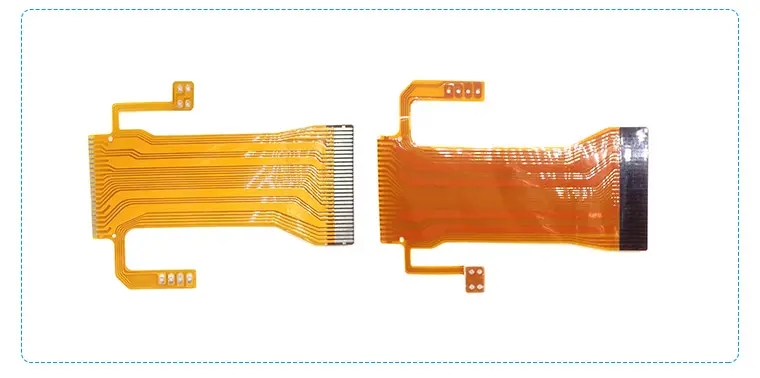How to Improve the BasIC Problems and Skills of PCB Design
When designing PCB boards, we usually rely on previous experience and tips we usually find on the Internet Each PCB can be optimized for a specific application. Generally, its design rules are only applicable to the target application For example, the A/D converter PCB rules do not apply to RF PCB boards, and vice versa However, some guidelines can be considered for any PCB design Here, in this tutorial, we will introduce some basic problems and techniques that can significantly improve your PCB design
Power and Signal Distribution
Power distribution is a critical element in any electrical design. All components depend on strength to perform their functions Depending on your design, some components may have good power connections, while some components on the same board may have poor power connections For example, if all components are powered by a single track, each component will observe a different impedance, resulting in multiple ground references For example, if you have two ADC circuits, one at the beginning and one at the end, and both ADCs read the external voltage, each analog circuit will read different potentials related to itself We can summarize the power distribution in three possible channels: single point source, star source and multipoint source
1) Single point power supply: The power and ground wires of each component are separated from each other. The power trajectories of all components intersect at only one reference point A single point is considered applicable to the power supply However, this is not feasible for complex or large/medium-sized projects
2) Xingyuan: Xingyuan can be regarded as an improvement of a single point source. It differs because of its key characteristic: the trace length between components is the same Star connection is usually used for complex high-speed signal boards with various clocks High speed signal PCB board s, the signal usually comes from the edge and then reaches the center All signals can be transmitted from the center to any area of the circuit board with delay between areas
3) Multi-point source: considered poor in any case. However, it is easy to use in any circuit Multipoint source can generate reference difference between components and in common impedance coupling This design style also allows high switching ICs, clock and RF circuits to introduce noise into nearby circuits that share common connections Of course, in our daily life, we are not always able to have a single type of distribution The tradeoff we can achieve is to mix the single point source with the multipoint source You can use analog sensitive devices and high-speed/single point RF systems, while all other less sensitive peripherals are concentrated in one location
Powered aircraft
Have you ever wondered if you should use a power plane? The answer is yes Power board is one of the methods to transmit power and reduce noise in any circuit The power board shortens the grounding path, reduces inductance, and improves electromagnetic compatibility (EMC) performance This is also due to the fact that the power planes on both sides also create a parallel plate decoupling capacitor to prevent noise transmission The power board has another obvious advantage: because of its larger area, it allows more current to pass through, thus adding a PCB board But be careful: the powered aircraft can raise the working temperature, but also consider the trace For PCB with RF sources (or any high speed signal application), you must have a complete grounding plane to improve the efficiency of PCB The signals must be on different planes, and it is almost impossible to meet these two requirements using double deck boards If you want to design an antenna or any low complexity RF board, you can use two layers In mixed signal design, manufacturers usually recommend separating analog grounding from digital grounding Sensitive analog circuits are susceptible to high-speed switching and signals If analog and digital grounding are different, the ground will be separated However, there are the following disadvantages: We should pay attention to crosstalk and loop areas, which divide the ground mainly due to ground level discontinuities On the left side, the return current cannot directly pass along the signal path. In addition, there is a loop area not designed on the right side
electromagnetic compatibility and Electromagnetic Interference (EMI)
For high frequency designs (such as RF systems), EMI may be a big disadvantage The ground plane discussed above can help alleviate EMI, but it depends on your PCB. The ground plane may cause other problems In laminates with four or more layers, the distance to the aircraft is critical When the in-plane capacitance is very SMAll, the electric field will spread throughout the circuit board At the same time, the impedance between the two planes decreases, allowing the return current to flow to the signal plane This will generate EMI for any high frequency signal passing through the plane A SIMple solution to avoid EMI is to prevent high-speed signals from passing through multiple layers Newly added decoupling capacitor; And place a grounding through hole around the signal trace The figure below shows a good high frequency signal design of PCB board
Filter noise

Bypass capacitors and ferrite beads are capacitors used to filter noise generated by any components. In general, any I/if used in any high-speed application, pin O may be a noise source To make good use of these, we must pay attention to the following matters: always keep ferrite beads and bypass capacitors as close to the noise source as possible When we use automatic placement and automatic routing, we should consider the distance when checking Avoid checking the vias and any other traces between the program and the components If there is a grounding plane, use multiple through holes to properly ground the PCB board









